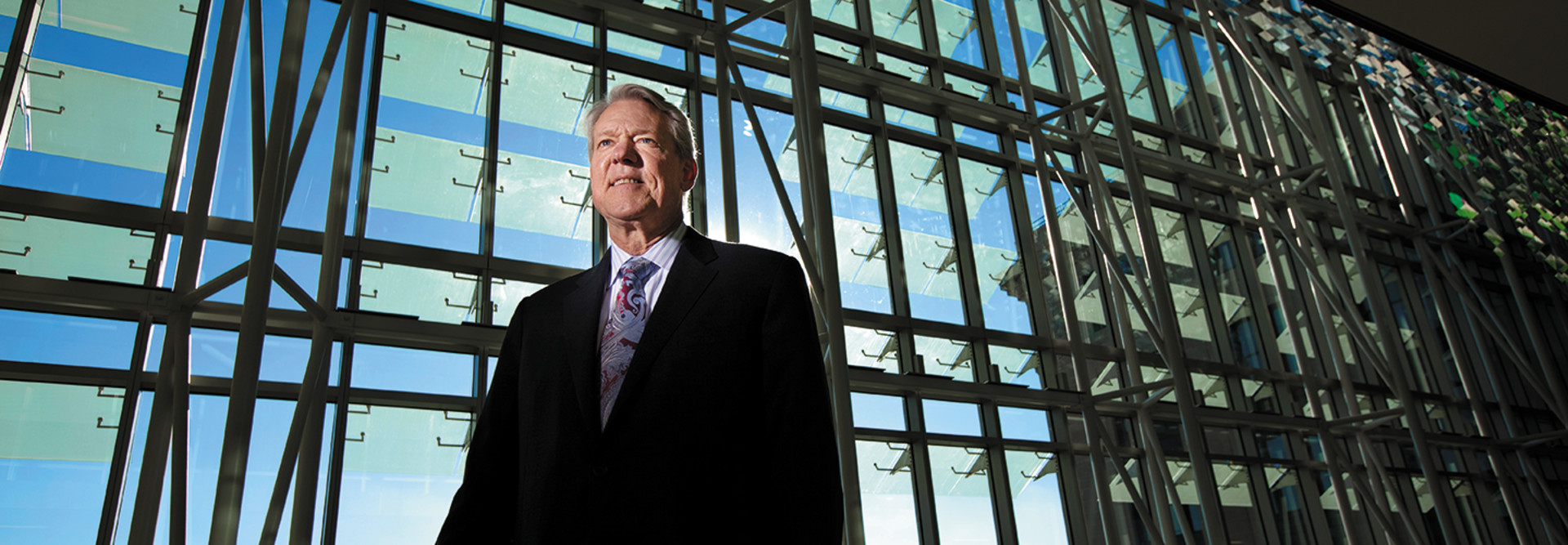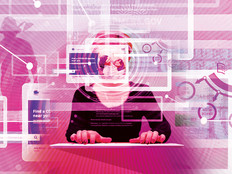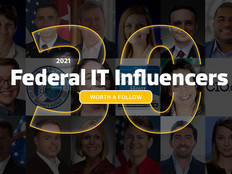The Internet of Things Takes Shape
Five years ago, as the General Services Administration planned several building renovation projects, GSA leaders decided to take advantage of new technologies to tie traditionally separate building sensor and control systems together with online room reservation systems and sophisticated data analytics. Linking systems to monitor and control light, carbon dioxide, temperature, ventilation and security, GSA’s headquarters in downtown Washington, D.C., became part of what is known as the Internet of Things, or IoT.
The results are impressive.
“In most American buildings, 50 percent or more of the space sits unused at any working-day moment,” says Kevin Kampschroer, director of GSA’s Office of Federal High-Performance Green Buildings. “By merging all these systems and applying analytics from IBM and a Boston company called FirstFuel, and coupling this with strong leadership, GSA has been able to increase building occupancy by more than 50 percent and save more than $24 million annually in real estate and energy costs.”
Excitement has been building over the IoT, which connects assets as diverse as appliances, automobiles and building systems to the Internet for interaction, information-sharing and innovation. Government agencies (including the Transportation Department and National Oceanic and Atmospheric Administration, as well as GSA) are key early adopters — and with 16 percent of the market, according to IDC, one of the fastest-growing sectors.
Projected global market for IoT products by 2017
SOURCE: IDC, Worldwide and Regional Internet of Things (IoT) 2014–2020 Forecast, May 2014
Big Savings with IoT
In GSA’s downtown office building, most employees have no assigned office or cubicle. Instead, they go online to book a desk or a conference room when they need it. As workers swipe ID cards upon entry, building automation systems light and cool the appropriate reserved spaces or raise and lower shades according to outdoor sunlight and temperature. Toward the end of meetings, lights start dimming in conference rooms to warn occupants of the next scheduled meeting.
Motion sensors interact with building control systems as well to manipulate environmental conditions according to space occupied.
Periodic environmental data fed into an analytics solution has allowed GSA to generate energy audits automatically without having to hire a team of engineers. By using advanced metering in New York, Washington and Montgomery County, Md., GSA has been able to take advantage of incentive payments from demand-response pricing, which rewards users who reduce energy consumption during brownouts.
IBM’s analytics service pulls, combines and analyzes real-time data from disparate building automation and advanced metering systems to provide real-time dashboards and alerts for any building issues that come up. For example, by reviewing information about electricity use, GSA discovered malfunctioning exhaust fans in the parking garage of the Ronald Reagan Building in Washington. “The energy savings from addressing that issue alone practically paid for our entire IoT investment there,” says Kampschroer. Energy data is available to the public for analysis at energy.data.gov. According to Kampschroer, GSA buildings consume 16 percent less energy than the average commercial building.
Safety Boost
Auto safety is the goal of an IoT pilot project in Ann Arbor, Mich., funded by the Transportation Department. From August 2011 to 2014, the University of Michigan Transportation Research Institute (UMTRI) tested more than 2,800 trucks, cars, buses and motorcycles with vehicle-to-vehicle communications via Dedicated Short-Range Communications (DSRC), a proprietary wireless technology similar to Wi-Fi.
As they drive through the Ann Arbor test area, test vehicles exchange GPS location, speed and direction wirelessly, 10 times per second, over a range of about 300 meters. A combination of systems uses this information to provide drivers with advanced warning of potentially dangerous situations.
“The purpose of the study was data collection. The goal is that a driver is alerted to a potentially hazardous situation with enough time to react and avoid the situation,” says Francine Romine, UMTRI’s director of communications and marketing.
Evaluating Issues
Roadside wireless equipment installed at several intersections connects to the city’s fiber-optic network for data collection as well as traffic and congestion management.
The system warns drivers of safety issues, such as excessive speed or unsafe road conditions. The Transportation Department collected test data to evaluate several issues, including the safety potential of the technology, and has used the results to announce that it is taking the next steps in the rule-making process toward a large-scale deployment.
In September, General Motors announced it would begin installing vehicle-to-vehicle communications in its 2017 Cadillac line, says Romine.
Save the Whales
Humans are not the only species benefiting from the IoT. The National Oceanic and Atmospheric Administration’s Office of National Marine Sanctuaries is using the IoT to protect the endangered right whale. The Stellwagen Bank National Marine Sanctuary has deployed acoustic buoys in shipping lanes, equipped with hydrophones to detect nearby whale calls.
“The data is sent over satellite to Cornell’s Laboratory of Ornithology bioacoustics lab,” says David Wiley, research coordinator for Stellwagen. Once the lab verifies that the call belongs to a right whale, it sends the information to mobile devices aboard ships running an application called Whale Alert, which shows the whale locations on charts, helping ships avoid them.
At the suggestion of shippers, NOAA has also incorporated tide, current and wind information into Whale Alert. “This has helped convince many more shippers to deploy the application,” says Wiley.
The potential of the IoT to improve products and services both inside and outside the government is practically limitless. “We believe IoT has the potential to achieve greater efficiencies in just about all aspects of life,” says Dr. Peter Fonash, chief technology officer for cybersecurity and communications at the Department of Homeland Security.









